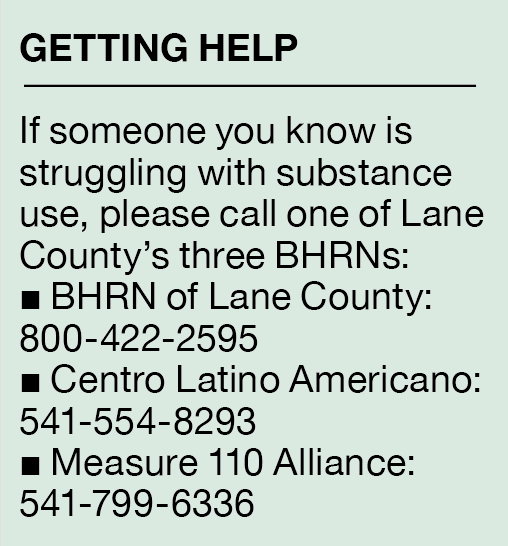
In November 2020, Oregonians voted to transform the way our state responds to substance use by passing Measure 110. The measure generated significant controversy by decriminalizing the possession of controlled substances – including methamphetamine, heroin, and fentanyl. It created a new system to deliver treatment, housing, and harm reduction services to our neighbors who use substances called Behavioral Health Resource Networks, or BHRNs.
Both reform advocates and behavioral health providers must acknowledge valid feelings of frustration and dissatisfaction on the part of a skeptical public, whose primary experience of Measure 110 is witnessing the proliferation of people using substances in public and open-air drug markets. The inability of law enforcement to intervene is broadly perceived as yet another example of the government unable to act to protect the public good.
Substance Use Disorder is a chronic disease that affects the reward center of the brain, leading to changes in the brain’s chemistry and neural pathways that perpetuate use of the substance despite increasing negative consequences. Unlike other chronic conditions like hypertension or diabetes, the behavior of a person experiencing Substance Use Disorder wreaks havoc on others, most often their family, but also neighbors and community. The state has an obligation to protect those who are harmed.
To address substance use, Measure 110 provides funding raised by taxes on the sales of recreational marijuana to networks of community providers: the BHRNs. These new BHRNs are expected to provide trauma-informed, culturally responsive services at no cost to the consumer. In addition to low-barrier substance use treatment, BHRNs also provide screening and assessment of behavioral health needs, individual service planning, peer support, housing, harm reduction, and supported employment. There is at least one BHRN in each county or tribal area in Oregon. Lane County has three – Behavioral Health Resource Network of Lane County, Centro Latino Americano Culturally Specific BHRN, and the Measure 110 Alliance – each of which operates a 24-hour phone line that people who need help can call.
In January 2022, the Secretary of State released a real-time audit on the implementation of Measure 110 that identified several areas of concern. The audit showed how the Oregon Health Authority, or OHA, had not developed a comprehensive plan to implement Measure 110, resulting in a lack of clarity and consistency in its implementation across the state. The audit also raised concerns about OHA’s data collection and reporting efforts, which hindered the audit’s ability to accurately evaluate the effect of the program.

Due to limited support from OHA, the state was unable to distribute funding to the new BHRNs until August 2022 – 18 months after the decriminalization of dangerous drugs was allowed to take effect. The audit concluded it was too soon to tell if the reforms created by Measure 110 would be effective at reducing drug use in Oregon.
The only way for Measure 110 to ultimately succeed is for people to utilize the new services offered and quit using substances. Each of us can share words of encouragement and information about services available from the BHRNs with those in our lives who are struggling. Otherwise, the legacy of Measure 110 will be the legitimization of indifference to the suffering of our neighbors.
Chris Wig is executive director of Emergence Addiction and Behavioral Therapies. Emergence provides substance use, mental health, and disordered gambling treatment to people in Lane and Linn counties.






